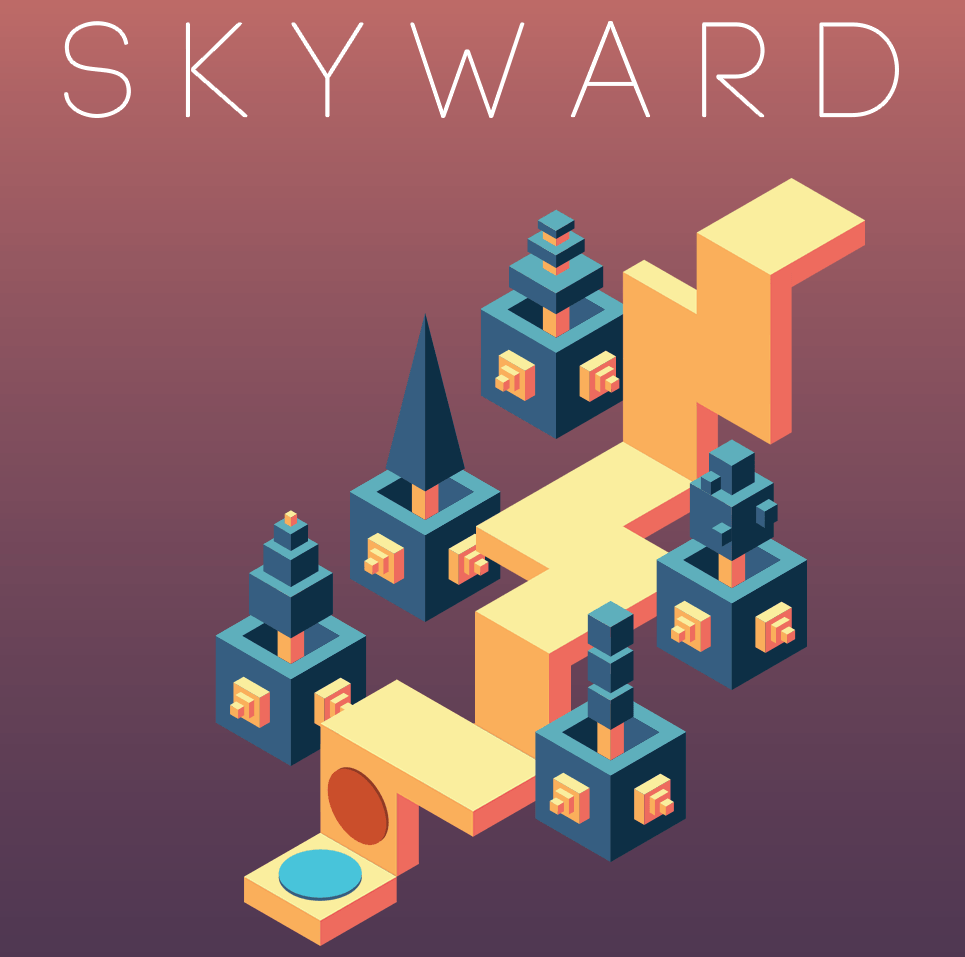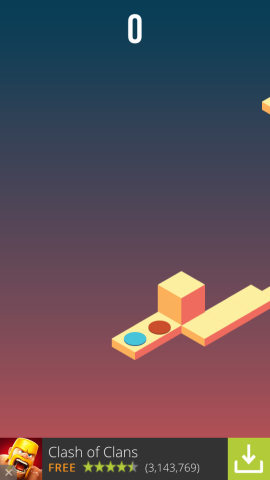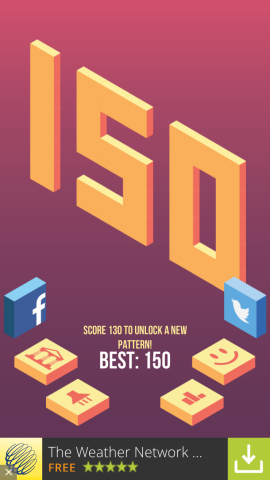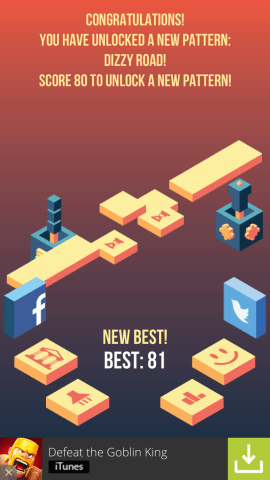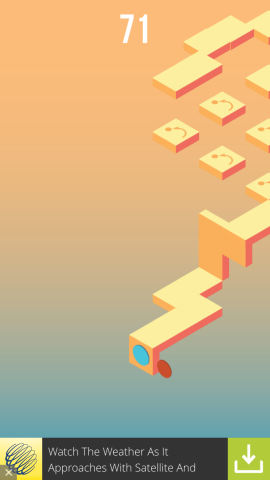Refreshing and addictive platforming game
At first glance, it looks like a second expansion pack to Monument Valley. It ticks all of the boxes: a gorgeous color palette, simple shapes and impossible geometry. Do not mistake it for a clone, though. The gameplay is entirely different, and instead of a puzzler we have a timing-based platforming game with randomly generated levels.
You control two circles. At any one time, one of them is locked in place and the other is orbiting around it. When you tap anywhere on the screen, the moving circle locks into place if it’s over a tile and the stationary circle starts to orbit. It feels a bit like walking with two fingers, but you only need a thumb to do it. You get one point for each tile you successfully pass.
The premise is simple and easy to pick up. At first it is difficult to know whether the game thinks the circle is over the tile, and you may fail a few times because you thought the circle was in the right place when it wasn’t. After a few tries, you quickly get used to how to negotiate the path.
True to the name, in Skyward you only move towards the top of the screen. As you move up and get higher scores, the level gets increasingly complicated. You land on tiles which change the orbit direction, speed up and slow down orbit speed, increase orbit distance and more. These special tiles are arranged into ‘patterns’ that the player unlocks by reaching milestones in score.
Because of the seemingly infinite number of ways the patterns can be arranged, you get a different level each time you play. Some people might take an issue with this, particularly platforming perfectionists who like to learn levels inside out, but to most it’s a great source of variety in an otherwise simple game.
The sound effects are minimalistic, but fit for purpose. As you lock the circles, it definitely sounds as though you’re making footsteps on smooth floor tiles. The music starts off simply, and evolves as you pass certain milestones. This is really compelling; inspiring wonder as to how the music will change at even higher scores.
What’s really impressive, especially for a procedurally generated game, is the attention to detail. Not all of the pieces that make up the patterns are part of the level. Some are in fact just decoration. There is a huge variety from striking pagodas to trees and even more surreal landmarks. Often, small birds come to perch on these and fly away as you pass. It’s entirely unnecessary, but at the same time non-instrusive and pleasant.
Through the use of ‘patterns’ to create chunks of a level that can be rearranged, Skyward achieves the infinite variety of procedural generation without sacrificing on content that is carefully designed. Each one in itself is like a mini-level that lasts a few seconds. You start to get the really high scores once you learn how to tackle all of the patterns you have unlocked.
There doesn’t seem to be any way to remove the ads though. They don’t get in the way as they only pop up after every few attempts, but it would be nice to have a paid version for uninterrupted play. Considering how infrequent full-screen ads are, it’s a minor gripe at best.
Skyward is a simple yet elegantly executed idea that will have you clamoring to improve your score and gather new patterns. The lack of depth would be a criticism if it was a paid app, but it gets around that by being absolutely free and by giving you a different level every time you play.
Price: Free
Version: 1.1
Size: 15.7
Developer: Ketchapp
Platform: iOS Universal
